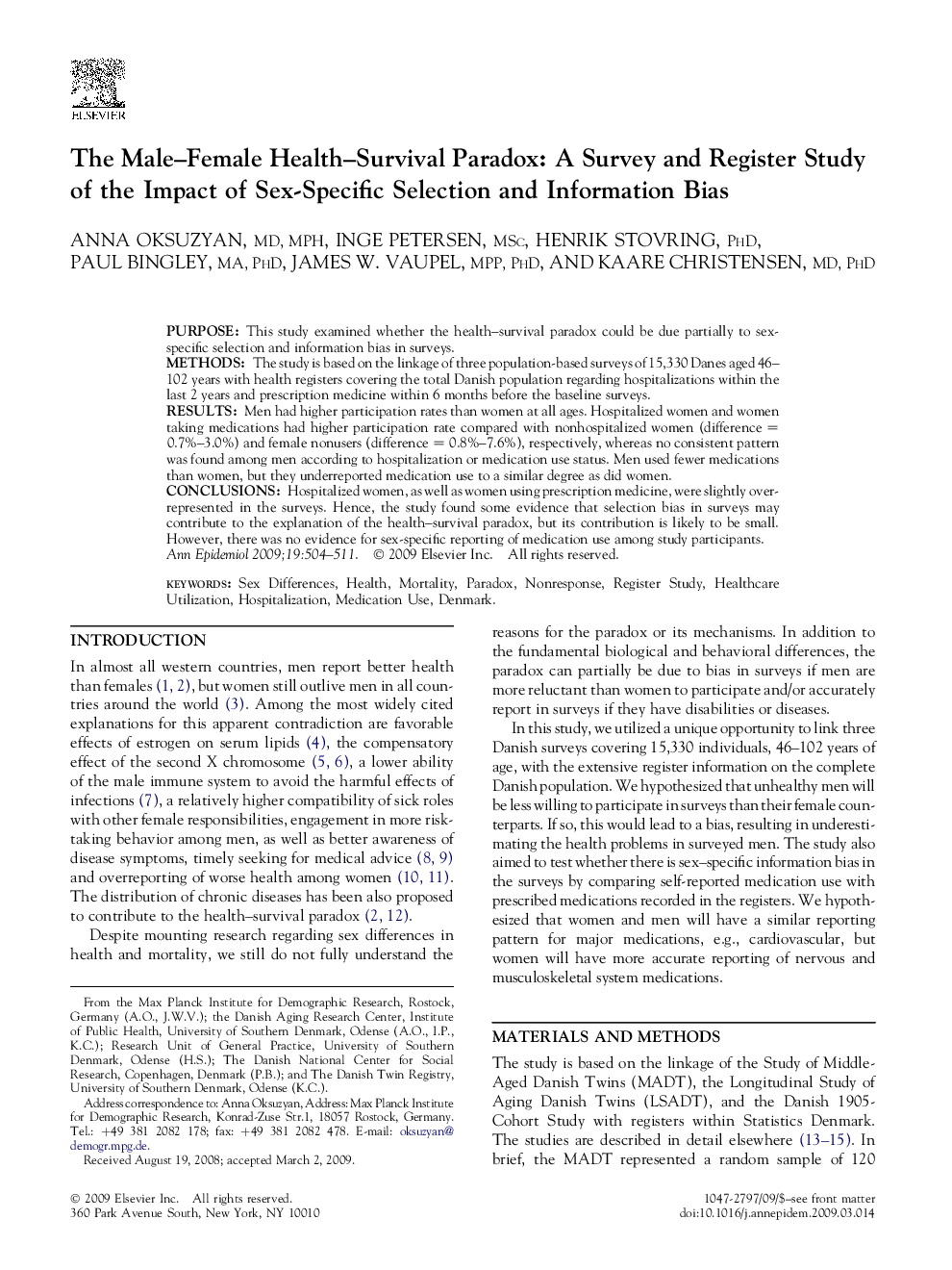| Article ID | Journal | Published Year | Pages | File Type |
|---|---|---|---|---|
| 3444913 | Annals of Epidemiology | 2009 | 8 Pages |
PurposeThis study examined whether the health–survival paradox could be due partially to sex-specific selection and information bias in surveys.MethodsThe study is based on the linkage of three population-based surveys of 15,330 Danes aged 46–102 years with health registers covering the total Danish population regarding hospitalizations within the last 2 years and prescription medicine within 6 months before the baseline surveys.ResultsMen had higher participation rates than women at all ages. Hospitalized women and women taking medications had higher participation rate compared with nonhospitalized women (difference = 0.7%–3.0%) and female nonusers (difference = 0.8%–7.6%), respectively, whereas no consistent pattern was found among men according to hospitalization or medication use status. Men used fewer medications than women, but they underreported medication use to a similar degree as did women.ConclusionsHospitalized women, as well as women using prescription medicine, were slightly overrepresented in the surveys. Hence, the study found some evidence that selection bias in surveys may contribute to the explanation of the health–survival paradox, but its contribution is likely to be small. However, there was no evidence for sex-specific reporting of medication use among study participants.
